The principle of bouncing flash
This is another example of the principle of a bounced flash. A bounced flash is when you use a flash and instead of directing it just at your subject, you reflect it or redirect it to diffuse the light. The reason for this is obvious in the example: it creates a more pleasing image especially in portraiture.
You can aim the bounce to the ceiling, especially with a relatively low, white painted roof. This will create extra light from above. Or you can aim it behind you to broadly diffuse the flash. You can use a large reflective surface or white board held up by an assistant to angle additional light at the subject. You can set up remote flashes if you're in a studio. You can buy a flash umbrella and use this to diffuse the light. Or, as I did, you can buy a 3x5" index card and rubber band it to your flash.
The example shows on top, a directly aimed flash. Note that the color temperature is very cold. There's quite a bit of glare. The background is very dark.
The middle image shows the flash aimed directly at the ceiling, which in this case was high and dark. As a result, the shadows are coming from the ceiling and the color temperature is much warmer, and the background is visible, but it there's quite a bit of shadow under the eyes and chin.
The bottom image is a flash aimed at the ceiling and an index card rubber banded to the back of the flash, reflecting some of the flash forward. Note that there is strong lighting from the front, and also the diffused flash from above. There is some glare, but not bad. The shadows are very diminished. It is a more pleasing image.
The technique itself for bouncing a flash isn't the same as a directly aimed flash. You need to meter to account for some light from the flash, but not all. In truth, you might meter very close to what you would shoot without any flash. For the most part, it will require wide aperture.
The disadvantages of bouncing flash are actually numerous. It kills depth. Often, because you lose a lot of shadows, you lose depth and perspective and images can seem very flat. You also lose depth of field. With the very wide apertures, you typically end up focusing to infinity. Also, you typically light up the background well enough that you can lose the depth that the shadows would add. It's also a bitch to meter, since you can't rely on the flash setting or the ambient light metering.
But it adds a lot of warm lighting for portraiture and for still lifes, and can replace complicated lighting when you're out and about. If you look at photojournalists, there are still a lot that use the index card bounce flash in their pro work. So it does have its place.
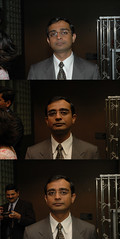
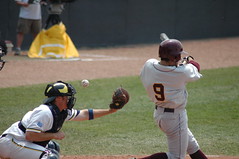
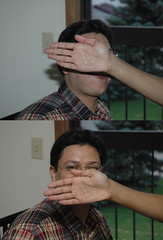
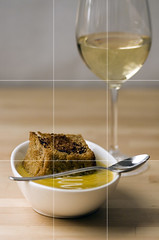
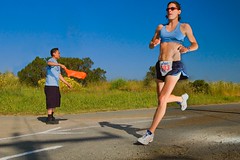
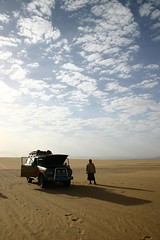

 The SLR (single lens reflex) camera eliminated parallax by using a system of mirrors to make the viewfinder view go through the lens. Thus,
The SLR (single lens reflex) camera eliminated parallax by using a system of mirrors to make the viewfinder view go through the lens. Thus, 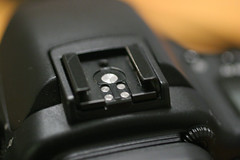
 The aperture is expressed as a fraction of the full focal length of the lens. It is written f/22 or f/16... There numbers are in strange intervals because each "full stop" is twice the area of the previous stop. This would be an increase or decrease in diameter by √2. These are the
The aperture is expressed as a fraction of the full focal length of the lens. It is written f/22 or f/16... There numbers are in strange intervals because each "full stop" is twice the area of the previous stop. This would be an increase or decrease in diameter by √2. These are the  If one were to make a camera from these basics of photography, you'd have what's called a pinhole camera. It is a lightproof box with a piece of film inside and a pinhole through which light enters. It's not hard to make one yourself, but the developing and processing, that's tough. But it's a useful proof of the concept.
If one were to make a camera from these basics of photography, you'd have what's called a pinhole camera. It is a lightproof box with a piece of film inside and a pinhole through which light enters. It's not hard to make one yourself, but the developing and processing, that's tough. But it's a useful proof of the concept.





